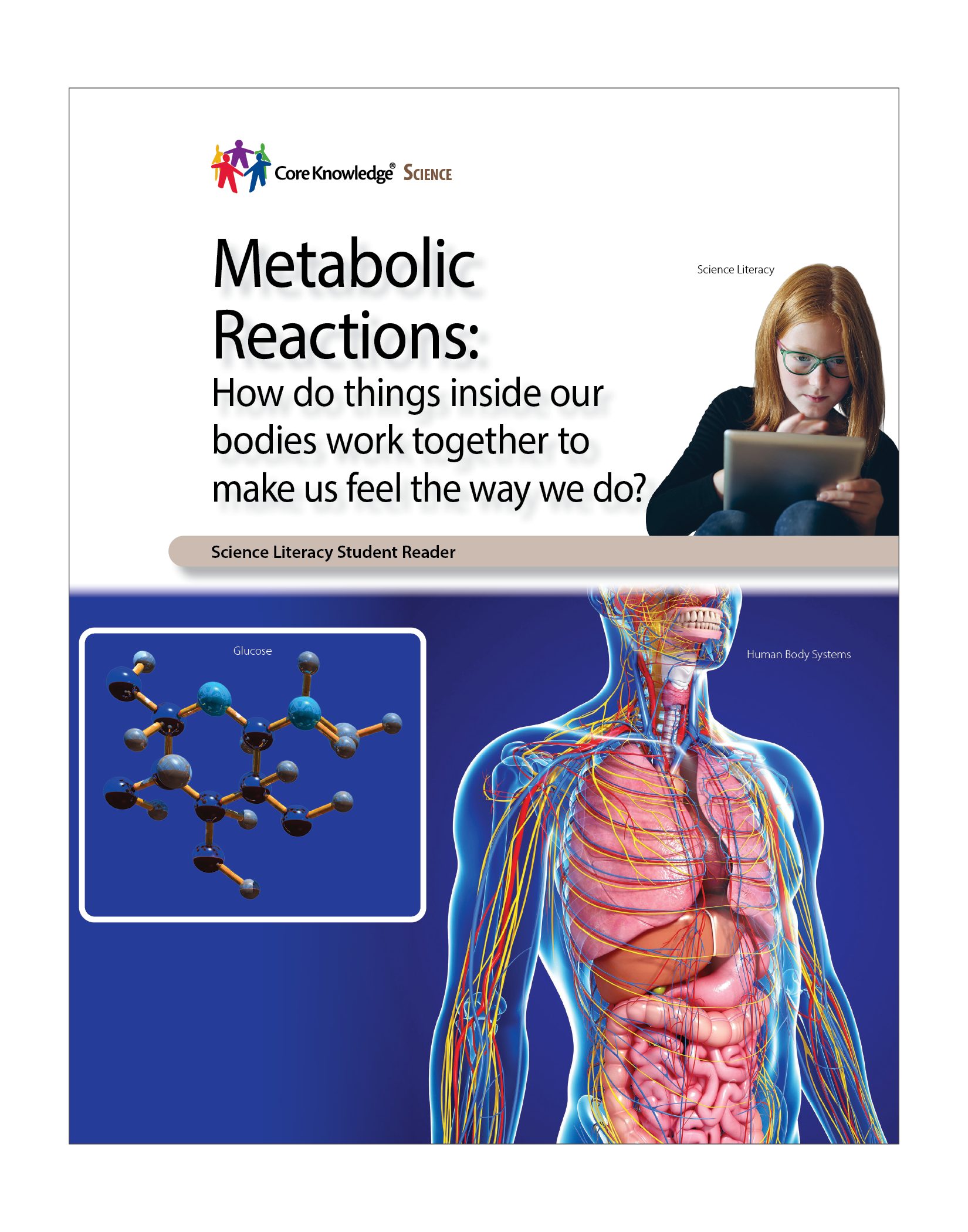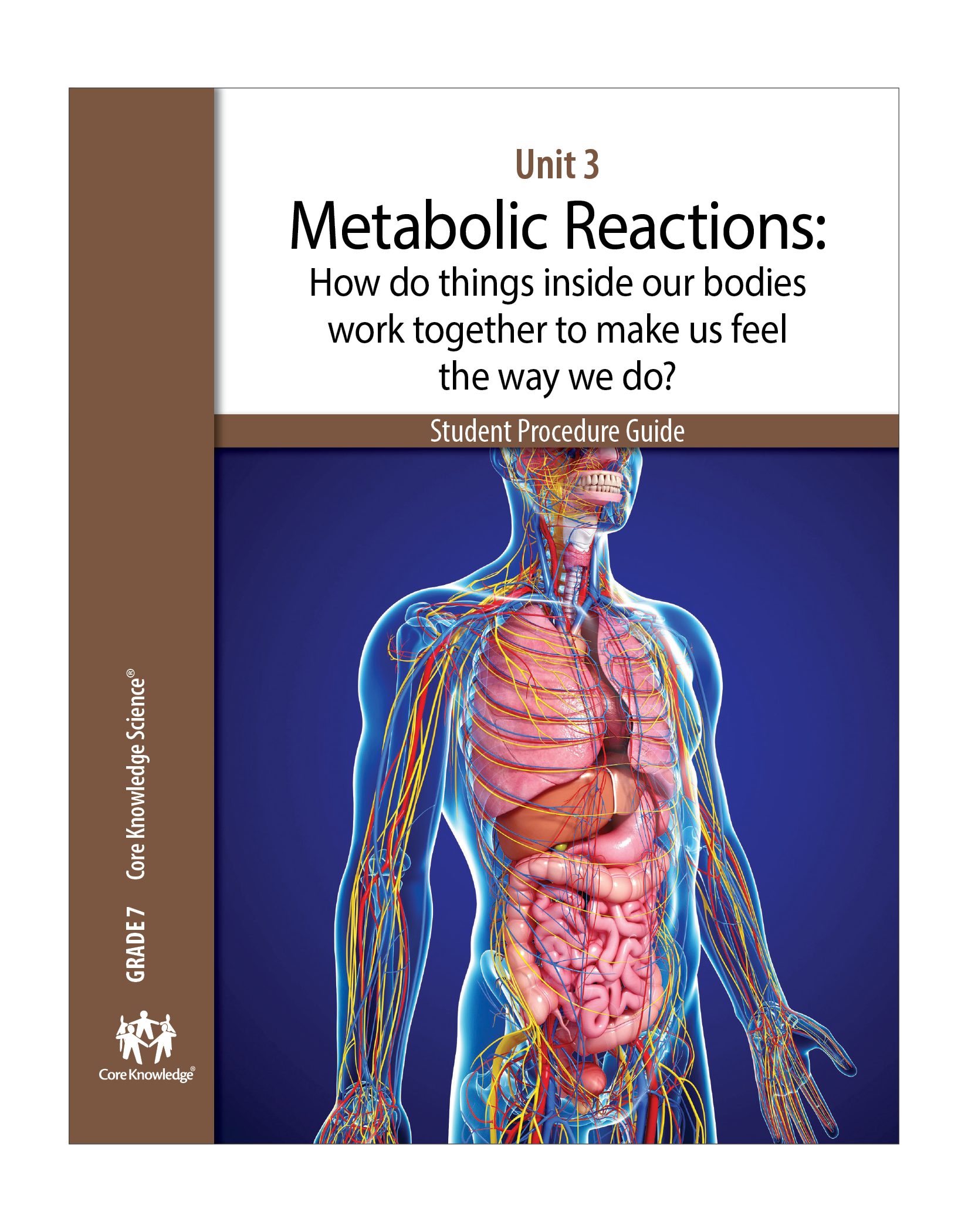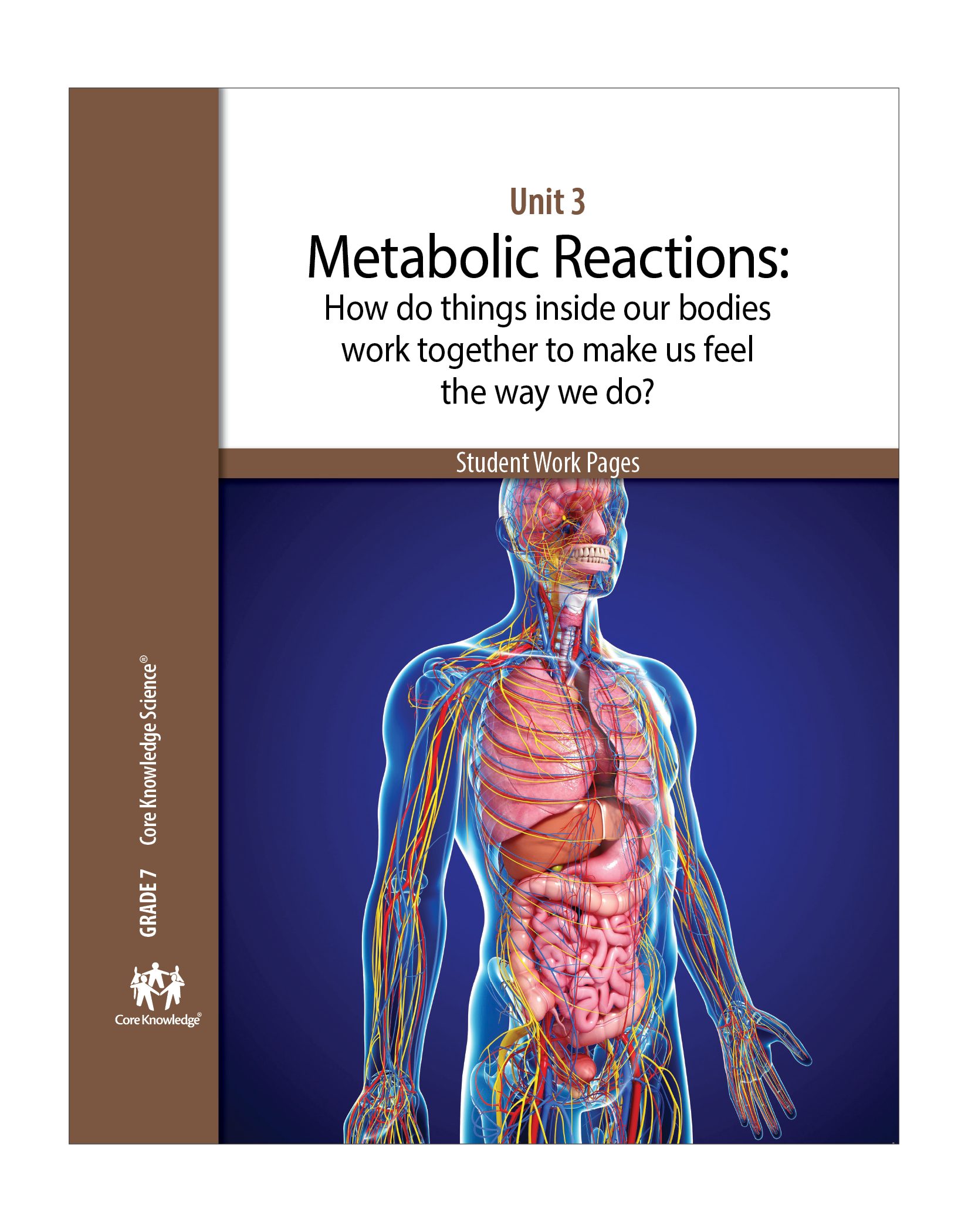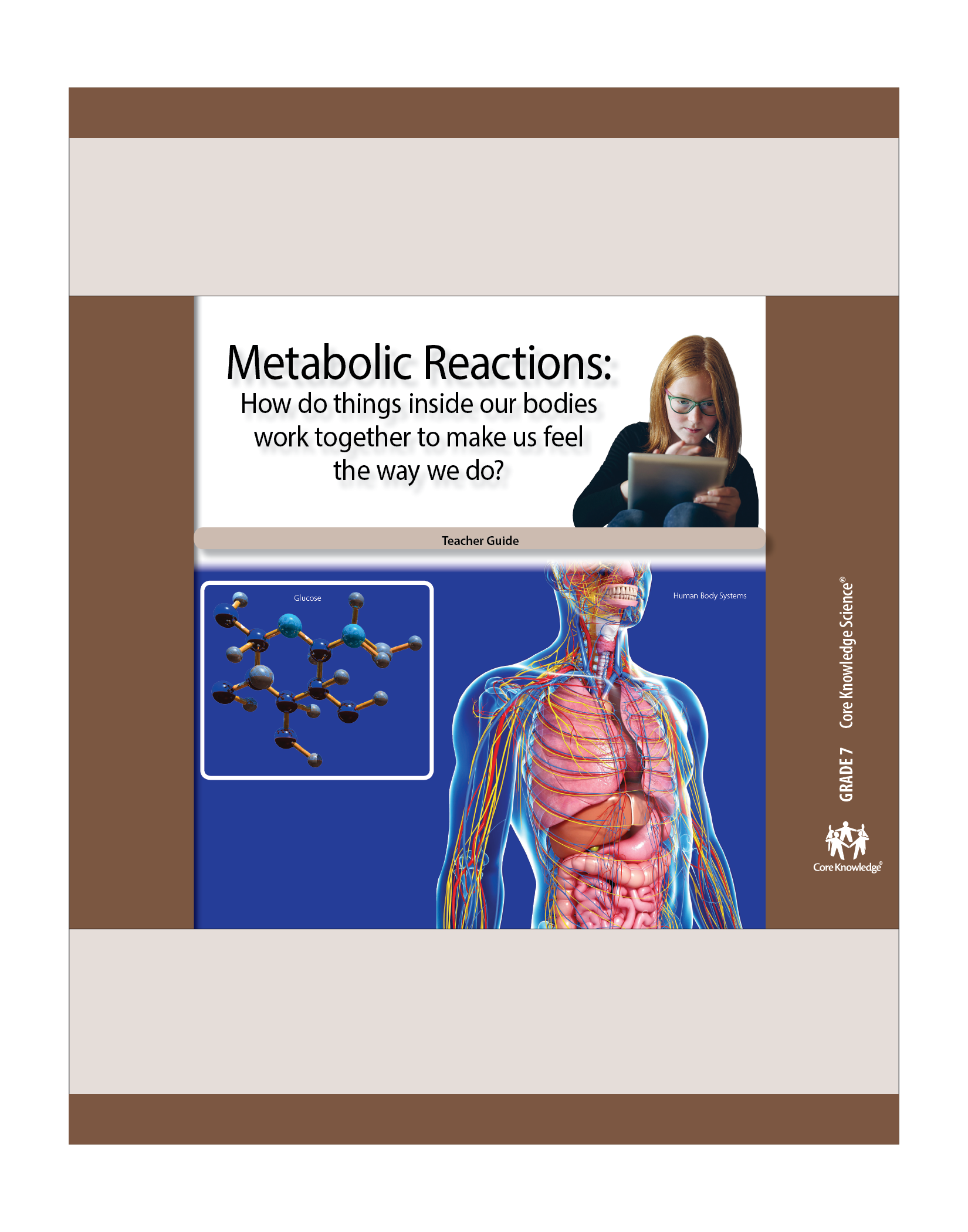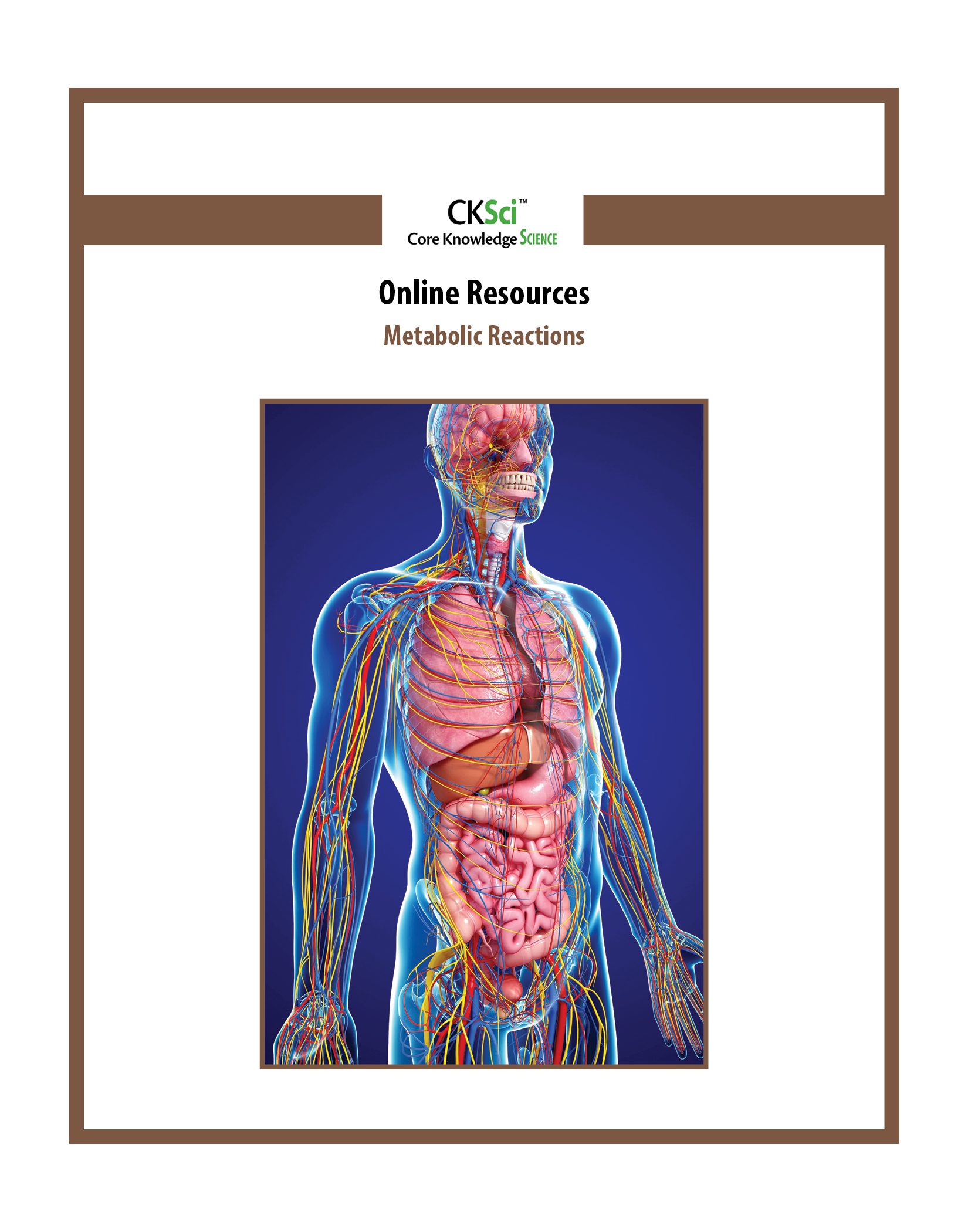
CKSci Unit 3: Metabolic Reactions
Focus:
In this unit, students investigate the phenomenon of digestion and other functions of the body as well as the sense of both health and sickness. The subtitle of this unit is How do things inside our bodies work to make us feel the way we do? Our sense of how our bodies feel throughout the day-to-day phenomena that students experience when they wake up, walk, run, feel hungry, and eat the wrong foods and the right foods. What causes these bodily feelings to happen? How do we digest the food we eat? What is food, chemically? What happens to those chemicals in the body? This unit allows students to observe weather and climate phenomenon in detail and then start to ask questions, formulate explanations, then set up and conduct activities and research. As students work with classmates to analyze their shared experiences, they can formulate new questions and develop new strategies for answering those questions. Students explore concepts that include the following:
- What is going on inside our bodies to make us feel the way we do?
- Why do molecules in the small intestine seem like they are disappearing?
- What happens to the different molecules in food as it travels through the body?
- Can problems in one body system cause problems in other systems?
- Do all animals have chemical reactions to get energy from food like humans?
As students move through their day-to-day activities, they will also read Core Knowledge literacy selections. These include factual articles, history of the sciences, art and literature, spotting bad science in media and advertisements, graphics comprehension, research-type articles, reliability of sources, and other areas of science literacy.
Number of Lessons:
- Teacher Guide: 15 Lessons
- Student Reader: 5 Collections
Instruction Time (Student Reader):
- Lessons are designed to be completed in one or more class periods.
- A Pacing Guide found in Online Resources offers a suggested time to complete the entire unit if class is held each day.
- The entire unit should take about 28 days to complete if class is held each day.
- A complete list of Materials needed to complete the unit is provided in Online Resources.
Additional Search Terms:
science literacy • carbohydrate • glucose • protein • fats • metabolism • metabolic reaction • digestion • digestive system • food energy • body mass index • BMI • feed conversion ratio • insulin • lactose • calorie • Calorie • food insecurity • nonfiction • informational text

